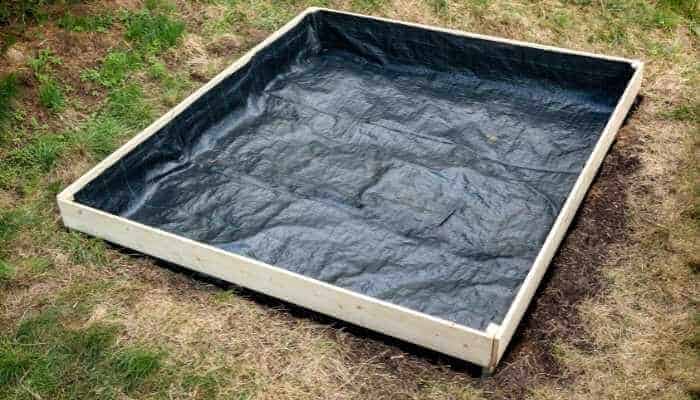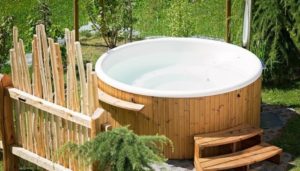I’ve done it. I admit it. I’ve made a raised garden box and then realized I forgot to put reinforcement materials in it or forgot to anchor it before I filled it up. I’m here to tell you, that’s not the end of the world. It just complicates things a little.
Adding soil can shift your raised garden bed and warp the sides, it’s best to be sure the bed is anchored and reinforced. The only time you can forgo anchoring is if your beds are actually containers and on a level, stable surface but they might still benefit from reinforcement.
The trick is to know which materials are best to use and also how you can anchor your raised garden bed properly. Keep reading and I’ll explain as much as I can.

Why Should I Anchor My Raised Bed Garden?
If you are just beginning to build or use your raised bed garden, and you’re using containers that are pieced together, they will need extra support. As you put your fillings in the container, more and more stress will push against the sides. If the sides aren’t anchored or if they don’t have the proper support, they might buckle.
If your raised bed garden is on a slope, adding an anchor can keep things in place, even if your bed is made with a full container and not pieced together. Not everybody is lucky enough to have flat, level surfaces for their beds. So, if you plan on using sloped ground, use an anchoring method to keep gravity and erosion from working against you. Also, try to level out the bed as much as possible.
Even in normal planting or shorter raised beds, if you have them on a slope, reinforcing those beds might be even better than just anchoring. Water carries debris downhill and erosion can take good soil and amendments you’ve already used down that hill and away from your plants. Or worse, it can cause flooding. Reinforce your hillsides with retaining walls. Those retaining walls will also need to be anchored.
What Materials Should I Consider for Anchors?
You can use metal rebar, fencing stakes, or wooden stakes, or you can use extra sideboards that are perpendicular to your raised bed box boards. You should really try to add anchors to the box before filling it. Not only will this be more convenient, but it’ll be more secure.
However, if you’ve forgotten or thought the materials could handle the pressure coming from all of the soil, plants, and water and then see some bowing that’s fixable. If your bed is on an incline and you see erosion or sliding becoming an issue, you can always go back and add anchors to help out.
Rebar is especially helpful in rocky soil. It may take a lot of work, but in the end, using them to anchor your corners at least will be a good idea. Using them for reinforcement along the longer sides can do nothing but help.
I like using fencing posts to anchor the corners of my raised bed gardens. They have a multi-purpose use that makes me happy. They may cost a bit more, but you can more easily secure them to your corners or boards because they usually have holes for screws or they’re flat enough for brackets.
Another great reason to use fencing posts for your anchoring and reinforcement is that they become multi-purpose tools. You can string wire or fencing to the top to help your vining plants. If you don’t have vines in the bed, but you’ve had issues with birds or pests, the fencing posts can be used for exactly that purpose – putting a fence around the top of the bed.
How Do I Secure My Raised Beds with Anchors?
With the metal and wooden stakes, your best bet is to drive them into the corners of the beds to give more sturdiness to the entire thing. Then, if you want, you can place them along the outside of the planet at specific intervals to provide more support for those longer boards.
When it comes to the wooden stakes, if you anchor before filling, you can drill holes through the stake and into the bed, then screw those stakes into the bed. You can still add stakes after the planter is filled, but unless you dig out the corner, securing them with a screw will not be possible. Adding these stakes along the areas on the outside of the bed that need reinforcement and then screwing them into the side boards is also a form of anchoring.
With the perpendicular boards, if you’re adding them after the fact, my usual method is to dig a 6-inch hole at a midpoint between the corner and the middle support that’s already there along the side of the bed. Then, I place a flat board like a 2×4 or 2×6 in the hole and screw it into the side boards. Last, I pack in the dirt around the board. That’s all there is to it, really. If you ad these, 2 to each side, the bed is anchored and the sides are more secure.
What I like about using stakes, especially wooden ones, is that if you leave them taller in each corner, you can then attach netting or sting or even more boards parallel to the side of the box so that vines can grow up on them. So they pull double duty!
What Else Should I Consider When Anchoring My Raised Garden Bed?
This has all been pretty straightforward when it comes to research. Anchoring and reinforcing your raised garden bed will ensure that they last a lot longer than if you don’t. Another thing I wanted to mention on reinforcement and strengthening your beds: using metal brackets at the corners. These things will help keep your beds sturdy for longer.
And if you have any further questions about raised gardens, see the many other articles I’ve written on the subject. They are compiled from both research and personal experience.












